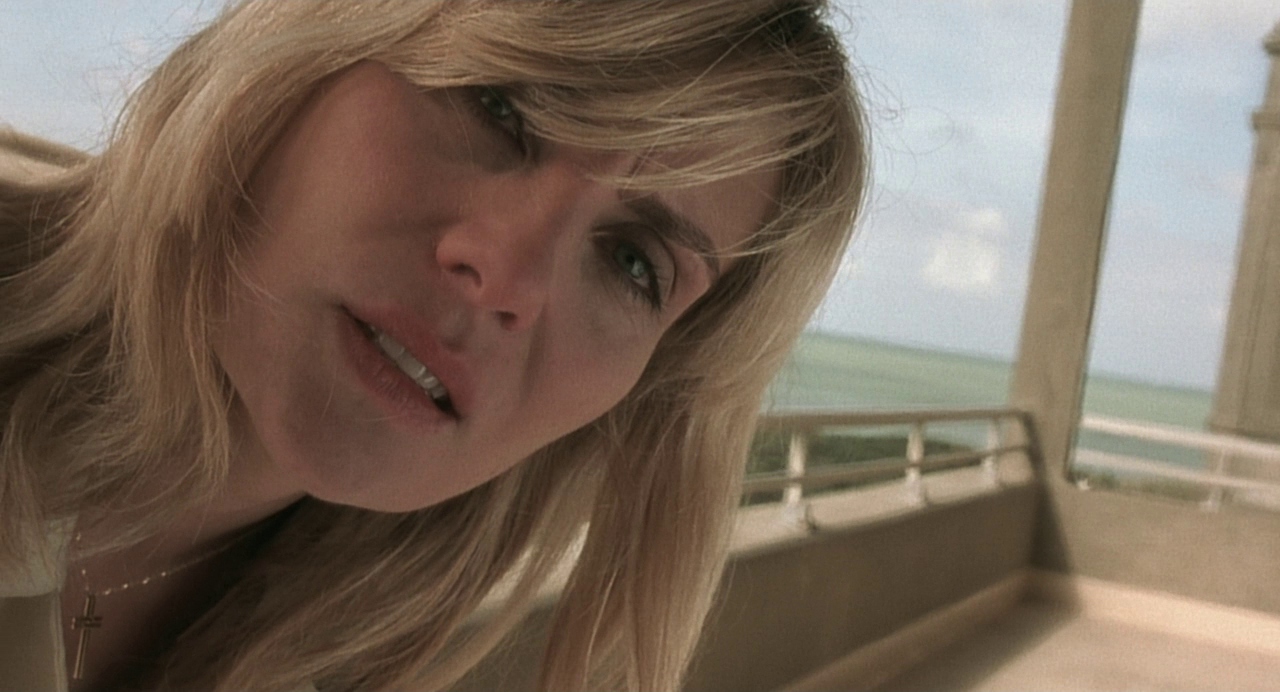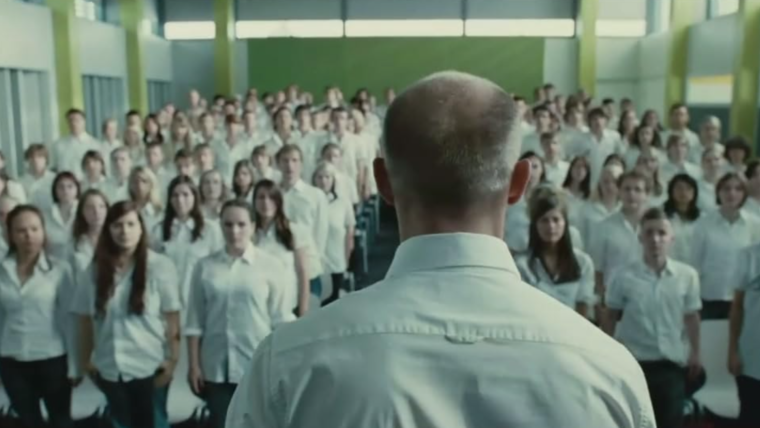In the vast landscape of cinema, certain films stand as shining examples of innovation, pushing the boundaries of storytelling, style, and perspective. These films challenge our expectations, provoke deep thought, and leave an indelible mark on our cinematic consciousness. In this series of reviews, we delve into the world of five remarkable films, each a distinct work of art in its own right.
From the poignant and visually stunning journey of “Le Scaphandre et le Papillon” (The Diving Bell and the Butterfly) to the audacious narrative experimentation of “Irréversible,” these reviews will guide you through a selection of exceptional films that have left an enduring impact on the world of cinema. We’ll explore the nuances of character-driven drama in “Sur mes lèvres” (Read My Lips), the mind-bending twists of “À la Folie… Pas du Tout” (He Loves Me… He Loves Me Not), and the suspenseful mastery of “Caché” (Hidden).
Join us on this cinematic exploration as we celebrate the uniqueness of these films, examining what makes them extraordinary, and why they continue to captivate audiences around the world. From the innovative storytelling techniques to the unforgettable characters and thought-provoking themes, these films have much to offer, and we invite you to discover the magic that sets them apart from the ordinary.
Prepare to embark on a journey through the world of cinema where storytelling knows no bounds, and uniqueness reigns supreme.
“Le Scaphandre et le Papillon” (2007) – “The Diving Bell and the Butterfly”
“The Diving Bell and the Butterfly” stands as a testament to the sheer power of human resilience and creativity. Directed by Julian Schnabel and based on the memoir by Jean-Dominique Bauby, this film is a one-of-a-kind exploration of the human spirit’s ability to triumph over unimaginable adversity.
What truly sets this film apart is its innovative visual storytelling. It immerses the audience in Bauby’s world, experiencing life through his eyes and mind. After suffering a devastating stroke, Bauby is left paralyzed, able to communicate only by blinking one eye. Schnabel uses first-person camera work to capture the world from his unique perspective. The audience is invited into the confines of Bauby’s mind, where imagination takes flight, transcending the limitations of his body. The result is a visually stunning and emotionally profound experience that captivates from start to finish.
Furthermore, “The Diving Bell and the Butterfly” showcases the beauty of human connection and communication when words are scarce. Bauby’s painstakingly composed memoir, written one blink at a time, reflects the depth of his inner world. The film underscores the value of empathy and the enduring nature of the human spirit, making it a cinematic masterpiece that lingers in the hearts and minds of viewers long after the credits roll.
“Irréversible” (2002)
Gaspar Noé’s “Irréversible” is a film that boldly defies conventional storytelling norms. Its unique narrative structure is a key element that sets it apart. The story unfolds in reverse chronological order, beginning with a brutal and harrowing climax and working its way backward through time.

This daring approach forces the audience to confront the consequences before understanding the causes, creating a visceral and disorienting experience. It challenges viewers to grapple with the idea that actions have far-reaching effects, and the past cannot be altered. The film’s audacity lies not only in its storytelling but also in its willingness to confront uncomfortable and disturbing subject matter.
“Irréversible” is not for everyone; it’s a challenging and polarizing film that leaves a profound impact on those who dare to watch it. Its uniqueness lies in its ability to push the boundaries of cinematic storytelling and provoke deep reflection on the nature of time, violence, and the human psyche.
“Sur mes lèvres” (2001) – “Read My Lips”
“Sur mes lèvres” (“Read My Lips”) is a hidden gem of French cinema that distinguishes itself through its nuanced and unconventional portrayal of an unlikely relationship. The film revolves around Carla, a hearing-impaired secretary, and Paul, an ex-convict. Their bond develops organically and defies traditional cinematic romantic tropes.
What makes this film truly unique is its unflinching portrayal of its flawed protagonists. Carla’s disability is not romanticized or used solely as a plot device but is integrated into her character’s identity. Paul’s criminal background adds layers of complexity, making their connection all the more genuine and unconventional. The film takes its time to explore their individual strengths and weaknesses, allowing viewers to understand and empathize with them.
“Sur mes lèvres” is a slow-burning, character-driven drama that showcases the power of empathy and human connection. It challenges societal norms and prejudices, reminding us that love and understanding can emerge in the most unexpected places. It’s a testament to the richness of French cinema in its ability to craft authentic and thought-provoking narratives.
“À la Folie… Pas du Tout” (2002) – “He Loves Me… He Loves Me Not”
“He Loves Me… He Loves Me Not” is a French psychological thriller that subverts audience expectations through its unique narrative structure. At first glance, it appears to be a straightforward love story from the perspective of its protagonist, Angelique.
However, what sets this film apart is its audacious twist, which completely reshapes the narrative. It challenges the audience’s perceptions and assumptions about the characters and events, forcing them to question everything they’ve seen. This brilliant narrative manipulation is not only a testament to the film’s storytelling prowess but also a commentary on the subjectivity of human experience.
The film is a masterclass in storytelling, highlighting how perspective can dramatically alter the meaning of a narrative. It keeps viewers on the edge of their seats, engaged in unraveling the truth behind Angelique’s seemingly obsessive love. “He Loves Me… He Loves Me Not” showcases the power of cinema to deceive and surprise, making it an unforgettable and distinctive cinematic experience.
“Caché” (2005) – “Hidden”
Michael Haneke’s “Caché” (“Hidden”) is a slow-burning thriller that stands as a paragon of suspense and psychological tension. What makes this film unique is its meticulous direction and its ability to create an atmosphere of unease that lingers long after the credits roll.
Haneke’s approach is deliberate and methodical, with long, unbroken takes that draw the audience into the intimate yet disturbing world of a seemingly ordinary family. The film explores themes of guilt, surveillance, and hidden secrets, challenging viewers to piece together its enigmatic puzzle.
“Caché” doesn’t provide easy answers or neatly tied-up resolutions. Instead, it invites viewers to engage with its complex characters and the unsettling questions it raises. It’s a film that forces us to confront uncomfortable truths and the consequences of our actions, making it a thought-provoking and haunting cinematic experience. Haneke’s ability to craft tension and suspense from the mundane is a testament to his mastery of the medium, setting “Caché” apart as a truly unique and unforgettable film.
In summary, these films offer distinct and compelling narratives, each pushing the boundaries of cinema in its own way. Whether through innovative storytelling techniques, unconventional characters, or thought-provoking themes, they showcase the diversity and creativity of world cinema, leaving a lasting impression on those who engage with them. These films also demonstrate the power of visual storytelling with stunning cinematography and mesmerizing imagery that captivate audiences. Additionally, they challenge traditional storytelling structures and explore complex social issues, making them not only entertaining but also intellectually stimulating cinematic experiences.



